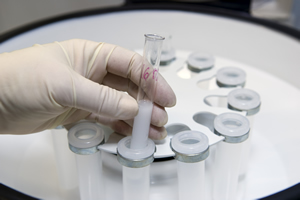
Co-cultivation of human embryos with endometrial epithelial cells and subsequent transfer to the blastocyst stage (day 5) is a safe and effective technology to improve implantation.
The method involves growing embryos in a nutrient medium on the surface of a single layer of dividing cells from the fallopian tubes or cells from the lining of the uterus (endometrial cells). They are sometimes called "feeder" cells or "helper" cells because they stimulate embryo development by removing toxins from the environment, adding growth factors, or exerting some other beneficial effect. Some studies have shown better pregnancy and birth outcomes when embryos are co- cultured in an in vitro environment.
Who would benefit most from co-cultivation?
Co-cultivation does not apply to all cases in an IVF program. It is usually used in patients with a "poor prognosis." Studies show that these patients can benefit most from IVF with co-cultivation. Patients with poor prognoses include women over 40, women with previous unsuccessful IVF, women with elevated FSH (follicle-stimulating hormone) levels, and women who respond poorly to ovarian stimulation with gonadotropins.
Co-cultivation can be extremely beneficial for some patients undergoing an IVF procedure. While the exact mechanism behind the benefit of co-cultivation, or why standard in vitro cultures are insufficient, is not known, what is achieved is helping the couple to have a baby.
Eggs and sperm are placed together on the day of egg retrieval to be fertilized. The next morning, after determining the number of fertilized eggs (called embryos), cells that were obtained a few days earlier are transferred to the co-culture. The embryos are then cultured with the helper cells until they are transferred into the woman.
Embryo co-culture is a technique used to improve the overall quality of embryos before they are transferred into a woman's uterus.
With the use of co-cultivation, an improvement in quality and relative embryo growth was observed 72 hours after oocyte retrieval (aspiration).
We recommend this technique to patients who have had previous unsuccessful IVF cycles with poor embryo quality.
We do not recommend it for patients who have never done IVF before or who have previously had a treatment cycle with excellent embryo quality.
A way to help the implantation process is to mimic the interaction between the endometrium and the embryo, which we know is vital in the natural environment for good implantation to occur. This is achieved by culturing the embryos together with endometrial cells in the in vitro laboratory.
